
All categories
Featured selections
Trade Assurance
Buyer Central
Help Center
Get the app
Become a supplier

(1403 products available)





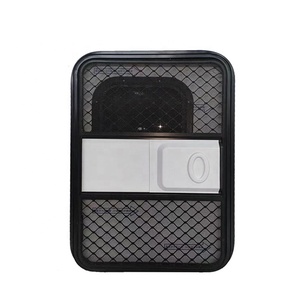
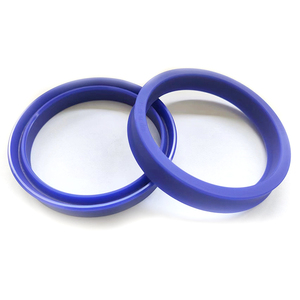





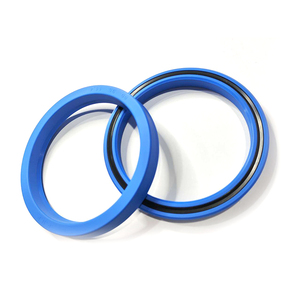


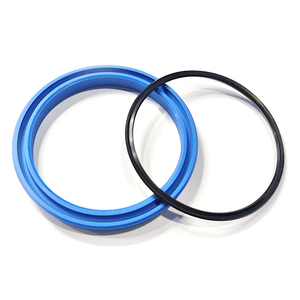


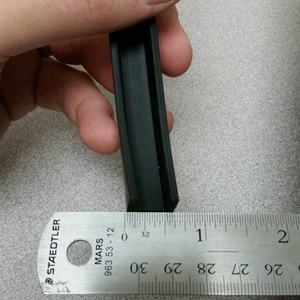



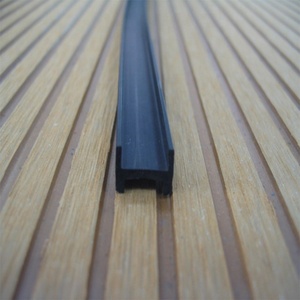


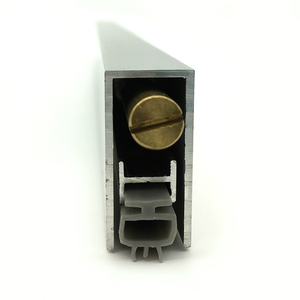

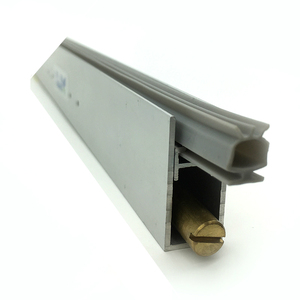

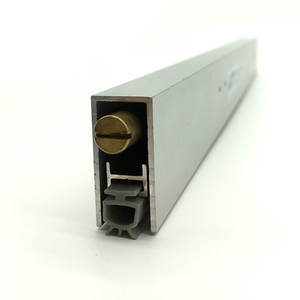




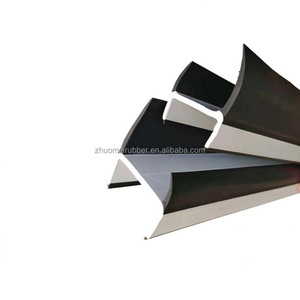




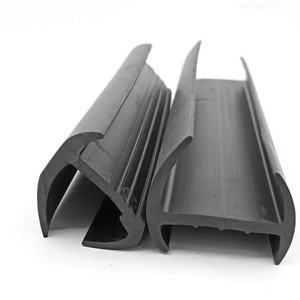


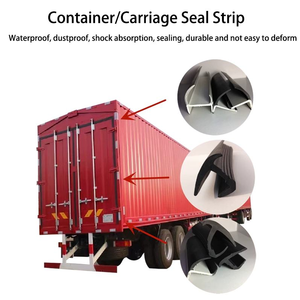



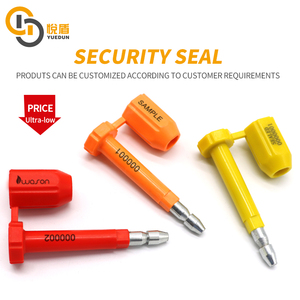
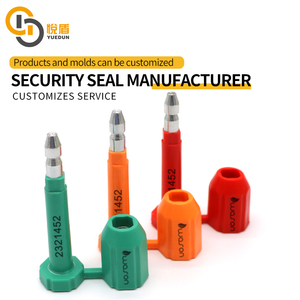
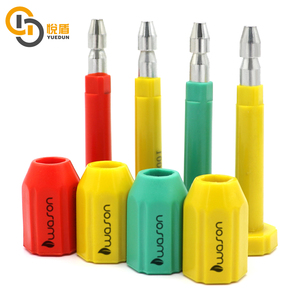

Door seals for trailer parts come in diverse types. Here’s a breakdown of the most common ones:
EPDM Rubber Seals
The trailer door seal is primarily made of EPDM rubber. What makes this rubber stand out? It is exceptionally resistant to UV rays, ozone, and extreme temperatures. These features make it ideal for trailers that undergo constant outdoor exposure. Additionally, this synthetic rubber maintains flexibility for a long period. Hence, it ensures a durable and watertight seal for effective insulation.
TPE Seals
Thermoplastic elastomer (TPE) door seals, which include thermoplastic rubber, offer a blend of plastic and rubber properties. These seals are recyclable, making them a more sustainable option for trailer manufacturers. TPE seals are also UV protection so they don’t degrade easily when exposed to sunlight. They have a less expansive temperature range than EPDM. Nonetheless, they are still suitable for most trailer applications.
Single Lip Seals
Often fabricated from rubber or silicone, single lip seals are designed to retain lubricants. At the same time, they prevent the entry of dirt or water. In trailers, these seals are commonly used around doors, windows, and other openings. This is to ensure protection against contaminants. Their simple design offers cost effectiveness and ease of installation.
Double Lip Seals
Double lip seals offer a more robust sealing solution compared to single-lip seals. The second lip acts as a barrier to prevent contaminants such as dust and water from entering. This feature makes them ideal for trailers operating in harsh environments. Their enhanced durability extends the lifespan of trailer components. This makes them a staple in heavy-duty applications.
Flocked Seals
Flocked seals are fitted with short nylon or polyester fibers glued to the rubber base. This provides a soft, compressible surface that enhances the seal's ability to conform to uneven surfaces. In trailers, flocked seals are used where a tight, dust-proof fit is required. For example, in trailer windows or camper doors. Their adhesive nature improves insulation and reduces noise.
Bubble Seals
Bubble seals, also known as foam rubber seals, have an air-filled core that provides flexibility and compressibility. This core enables the seal to absorb shocks and accommodate irregular surfaces. In trailers, bubble seals are often used in applications requiring vibration dampening. These can include sliding doors or hatches. Their resistance to compression set ensures a long-lasting, effective seal.
Proper installation and maintenance of a trailer sealant are key to prolonging its lifespan as well as ensuring optimal performance. Here’s a rundown on how to go about it:
Assess the Old Sealant and Clean the Area
Before installing a new seal, the old one has to be removed. This is mainly if it’s worn out or damaged. The remnants left have to be cleaned for a tight and watertight fit. To remove the old sealant, use a putty knife or a razor blade carefully to pry it from the application surface. Then grab a clean cloth and some rubbing alcohol. Use it to wipe the area and remove all debris and residue. This creates a clean surface for the new sealant to adhere to effectively.
Measure and Cut the Seal
Precise measurements for the seal are critical for an effective fit. Use a measuring tape to determine the length needed for each section of the trailer. After securing the measurements, cut the sealant to size. Be sure to make clean, straight cuts for the best results.
Prepare the Adhesive
Many seals come with pre-attached adhesive backing. What should be done here is to peel off the protective liner. On the other hand, some may require separate adhesive application. For this, follow the manufacturer's directions for the adhesive preparation. Be sure to use adhesive suited for the sealant material and the trailer’s surface.
Apply the Sealant
Start at one corner of the trailer and gradually work your way around. This minimizes backing adhesive from sticking to unwanted areas. If using adhesive separately, apply a thin, even layer of adhesive using a caulk gun for a uniform application. Afterward, press the sealant into place slowly and steadily. Ensure it aligns properly with the trailer edge. As the sealant is being pressed into place, leave no gaps between it to prevent leakages.
Regular Inspections
Routine checks for wear and tear go a long way in ensuring the sealants perform effectively. Like when doing a visual inspection, trailer owners should look out for cracks, gaps, or signs of deterioration in the sealant. For cases of flocked or bubble seals, check for mold or mildew growth. The earlier issues are detected, the sooner solutions can be found. This helps to prevent further damage to the trailer.
Proper Cleaning
To extend the durability of the door seal, keep it clean. This helps in maintaining its integrity. Use milder soapy water solution with a soft brush or cloth to remove dirt, grime, and other debris. Heavy-duty chemicals can weaken the sealant itself. As a trailer owner, one has to ensure the seal is kept clean and fresh without using substances that will compromise its quality.
Conditioning and Lubrication
Using silicone-based grease or a specialized seal conditioner helps maintain the seals' flexibility condition. Application should be done at least once a season or before expected extreme weather conditions.
This acts as protective lubrication against cracking or drying out. Note that this trick works best on rubber and silicone-based seals. It is not recommended on adhesive-based seals. This is because adhesive seals have specific maintenance requirements that should be followed according to the manufacturer’s recommendations.
Timely Repairs and Replacements
What happens when issues are identified during inspections? Small cracks or minor damages can be fixed using seal repairs or patches. However, frequently repair does not make associated problems go away. Then the seal may need replacement. Watching out for a worn-out seal and changing it promptly will protect the trailer from water incursions, energy loss, and other related damages. Additionally, this ensures the trailer operates smoothly with no effect on functionality.
Door seals for trailers come in different designs to cater to diverse needs. Below is a breakdown of common designs found on the market:
Perimeter Seals
This type of seal is installed around the entire perimeter of the trailer door. Its main goal is to provide a complete closure between the door and the trailer frame. This prevents water, dust, and air from entering the trailer. Perimeter seals are mostly made of rubber or foam. These materials ensure they create a tight compression on the surfaces to form a proper barrier to leak. They’re ideal in areas where a universal, all-weather condition is required.
Compression Seals
Compression seals are designed to function by compressing slightly when the door closes. This results in a tightly sealed unit that effectively shields the trailer's interior. These seals are particularly useful in environments with frequent temperature variations. These include refrigerated or heated trailers. They’re also commonly used in cargo trailers that need to be airtight or watertight to protect sensitive goods.
Strip Seals
Strip seals, also known as flap seals, are flexible sealing materials that are attached vertically to the trailer’s door edge. They then overlap with the trailer body when the door is closed. These are commonly used in larger trailers like travel trailers and trucks. In such trailers, perimeter or compression seals might not be feasible due to size. Strip seals provide an easy solution for maintaining proper sealing. They’re mainly fabricated from rubber or vinyl. These materials allow easy flexibility.
Edge Seals
Edge seals are fitted on the edges of trailer doors where the primary sealing needs exist. They have one main purpose: to prevent water and debris from infiltrating into the trailer. Edge seals are mostly used in combination with other seal types. This duo will improve overall coverage and protection. These seals are mainly constructed from high-density foam or rubber. These materials ensure they provide a long-lasting durable seal.
Automotive-Style Seals
These seals are also known as channel seals. They are designed to fit into a groove on the trailer door edge. This design enables the seal to provide a consistent and tight alignment closure between the door and trailer body. They work best in cases where a high degree of weather resistance is needed. This includes RV and boat trailers. Their excellent engineering provides outstanding performance against the elements.
The selected best caulk for trailer roofs depends on multiple factors. Here’s a rundown of key considerations that one should keep in mind:
Seal Material
When selecting trailer door seals, one needs to consider the material. The market’s most common seal materials are rubber, foam, and silicone. Each material has its unique benefits and suitability for the application. Like rubber seals, they’re durable and weather-resistant. This makes them ideal for outdoor use. Foam seals have a compression set. This enables them to provide optimal insulation. On the other hand, silicone seals are UV and ozone resistant. This enables them to withstand extreme temperatures.
Trailer Application
The trailer type will significantly affect the choice of seal. Cargo trailers require seals that provide an airtight and watertight environment to keep the load safe. Hence, a compression seal is ideal for this job. On the flip side, RV or boat trailers require seals that withstand moisture and salt. So, a silicone seal would do wonders here due to its robust water resistance. Considering the uniqueness of each trailer will guide one in selecting the most suitable seal.
Weather Resistance
The seal is an integral component that needs to be weatherproof. It protects the trailer's interior from harsh elements. Buyers should look for seals that are resistant to UV rays, ozone, and extremes in temperature. These features would provide an extra layer of protection from environmental factors.
Size and Fit
To ensure the seal performs optimally, it ought to be the right size. No gaps or tight fits should be left between the seal and the trailer. This poorly-fitting seal will compromise the trailer's integrity. Hence, it’s paramount to measure the trailer door accurately before purchasing a seal. When at the market, one should choose among adjustable or customizable options. They’ll provide a tailored fit for unique applications.
Easy Installation
How easy is it to install the seal? It’s a key consideration. Some seals will require professional assistance for installation. This could add to the overall cost. Conversely, others come with simple peel-and-stick backing that makes them a real-time saver. A seal with easy installation helps to avoid additional labor costs.
Cost-Effectiveness
While opting for a high-quality seal is paramount, one should consider cost-effectiveness. It’s prudent to sometimes weigh the long-term benefits against the initial cost. A slightly more expensive seal may be worth it for its durability. This could save money on replacements or repairs down the line.
Yes, trailer door seals play a significant role in improving the trailer's energy efficiency. A high-quality seal will ensure minimal air exchange. This helps to reduce heating and cooling costs. In addition, the trailer’s temperature remains constant. There’s no need to crank up that AC or heater in the trailer. Hence, energy costs are saved in the long run.
Strip seals would work wonders in this scenario. The flexibility of strip seal makes it a suitable option for sealing uneven surfaces. This includes a damaged door frame. In case the damage is too extreme to be handled, a new trailer door seal can be installed as a new frame. This can help bridge the gap between the damaged surface and the trailer. The new seal will create a better sealing unit.
The frequency of replacing trailer door seals primarily depends on the type of seal used. For a foam seal, it should be replaced after every 2-3 years. Rubber door seals offer durability and should be replaced after every 5-7 years. Silicone seals have excellent properties. Hence, they should be replaced every 7-10 years. This way, they can maintain their integrity.